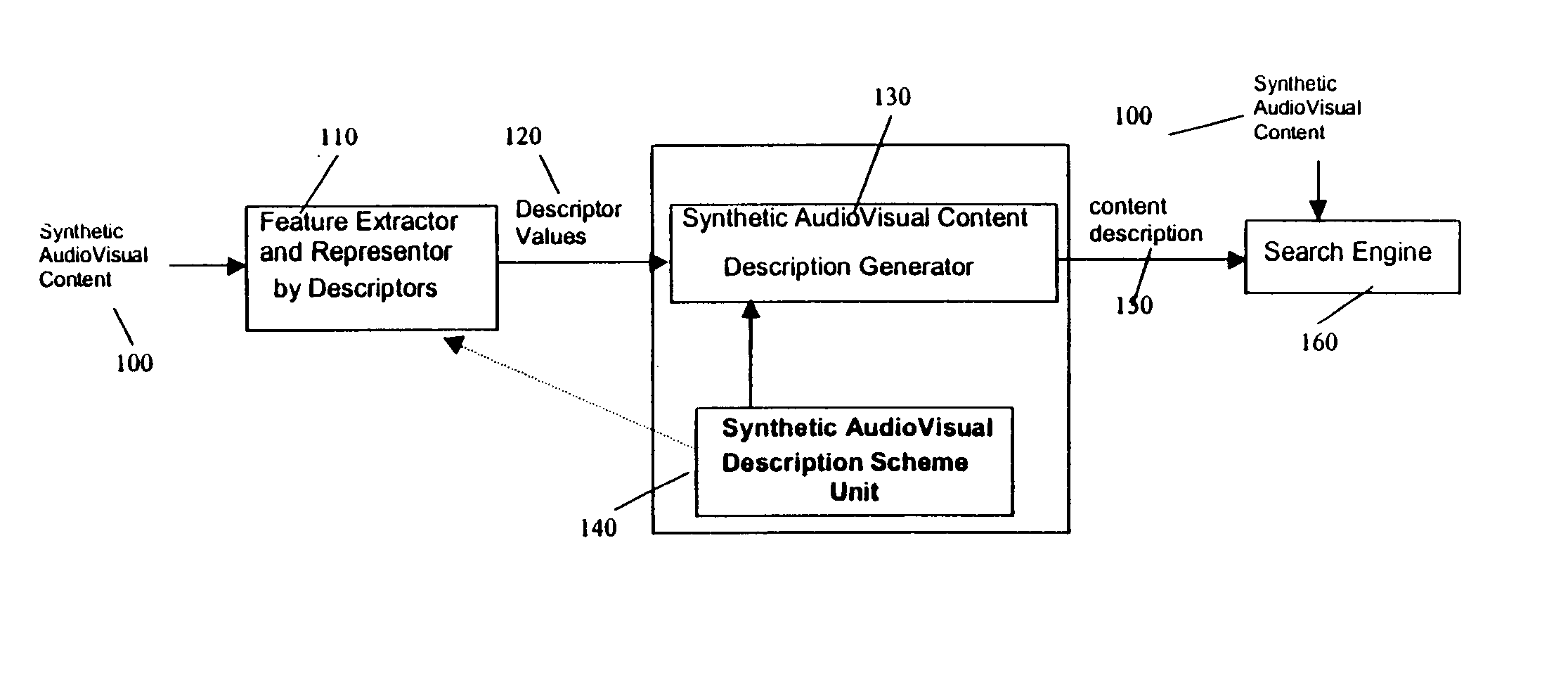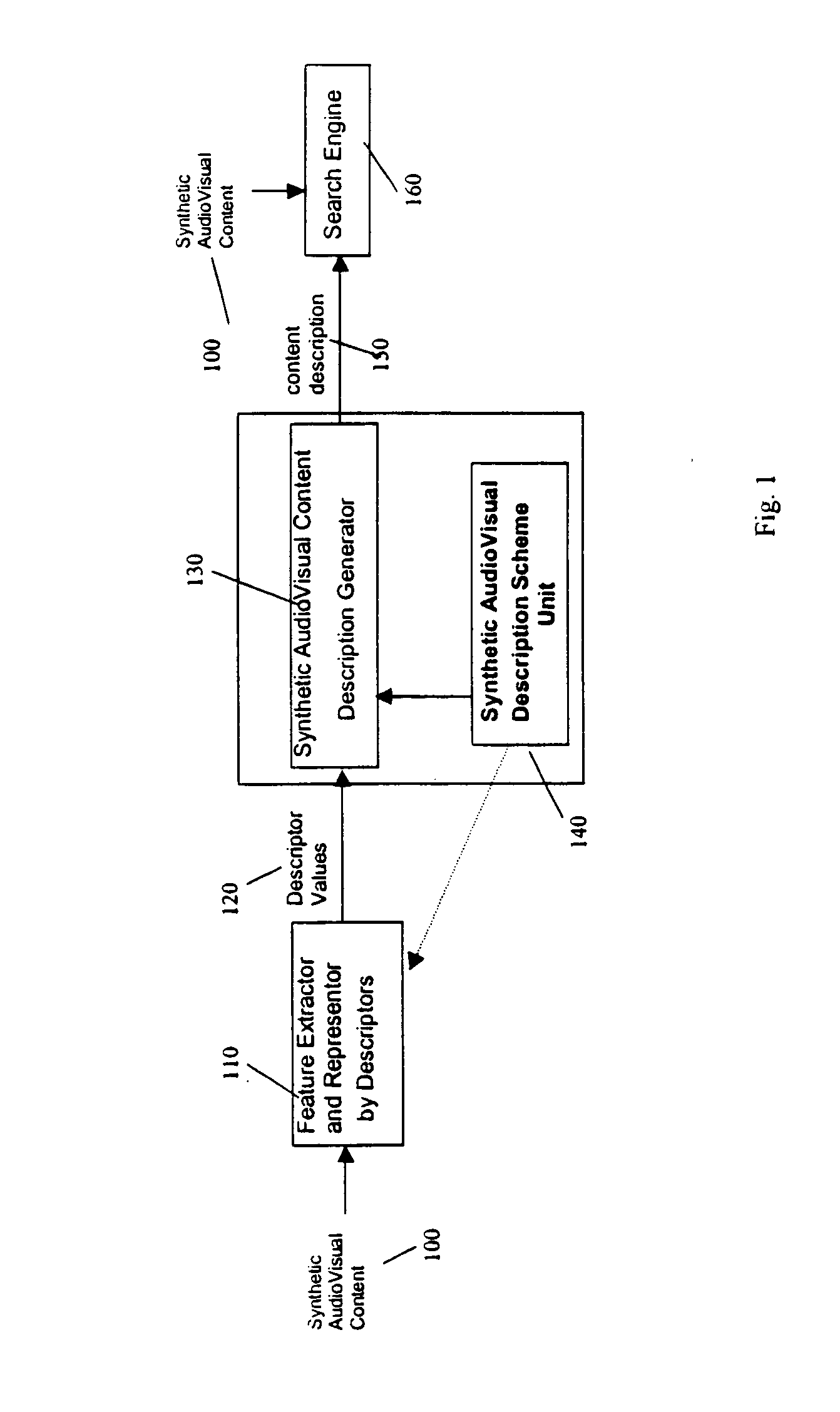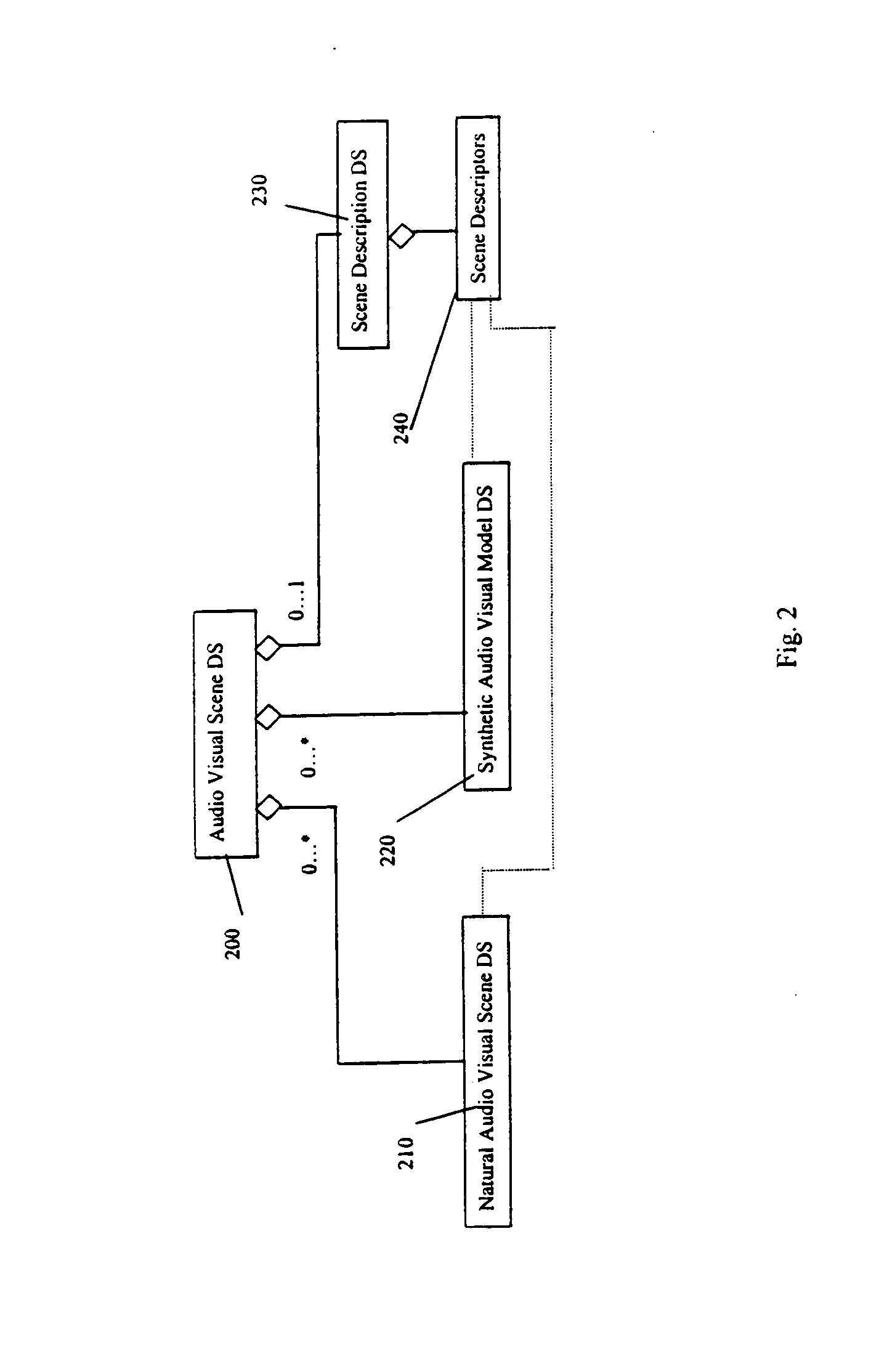Synthetic audiovisual description scheme, method and system for MPEG-7
a synthetic audiovisual and description scheme technology, applied in the field of audiovisual data processing, can solve the problems of increasing the difficulty of searching for such information by text-only search, increasing the difficulty of identifying, managing and searching, and the amount of information that may be included in such tags is somewhat limited
- Summary
- Abstract
- Description
- Claims
- Application Information
AI Technical Summary
Benefits of technology
Problems solved by technology
Method used
Image
Examples
Embodiment Construction
[0029] Prior to explaining the exemplary embodiment of the invention, a brief synopsis of MPEG-7 is provided to aid in the reader's understanding of how the exemplary embodiment processes synthetic visual data within the construct of MPEG-7.
[0030] MPEG-7 is directed at providing a standard that allows quick and efficient searching for various types of multimedia material interesting to the user. MPEG-7 is meant to provide standardization of multimedia content descriptions. MPEG-7 expects to extend the limited capabilities of proprietary solutions in identifying content that exist today, notably by including multimedia data types. In other words, MPEG-7 will specify a standard set of descriptors that can be used to describe various types of multimedia information. MPEG-7 will also specify predefined structures of descriptors and their relationships, as well as ways to define one's own structures. These structures are called description schemes (DSs). Defining new DSs can be performed...
PUM
 Login to View More
Login to View More Abstract
Description
Claims
Application Information
 Login to View More
Login to View More - R&D
- Intellectual Property
- Life Sciences
- Materials
- Tech Scout
- Unparalleled Data Quality
- Higher Quality Content
- 60% Fewer Hallucinations
Browse by: Latest US Patents, China's latest patents, Technical Efficacy Thesaurus, Application Domain, Technology Topic, Popular Technical Reports.
© 2025 PatSnap. All rights reserved.Legal|Privacy policy|Modern Slavery Act Transparency Statement|Sitemap|About US| Contact US: help@patsnap.com



